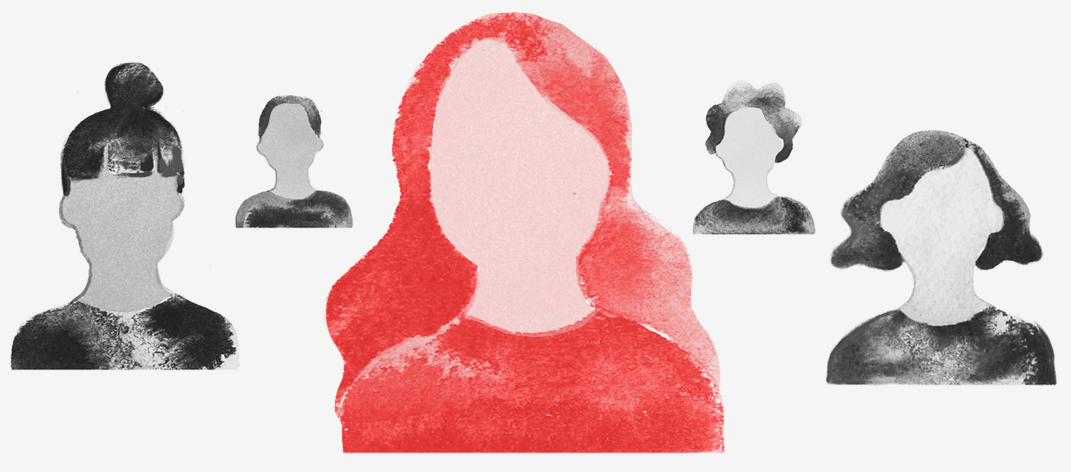Unfounded review survey results
unfounded
What is your police service doing about sexual assault?
In response to a Globe and Mail investigation into how Canadian police services handle sexual assault cases, law enforcement and government officials vowed action. But change looks different depending on where you are in the country





The background
In February 2017, The Globe and Mail launched Unfounded, an investigative series that looked at how Canadian police services handle sexual assault cases. Since then, police departments from across the country have pledged to review thousands of previously closed cases, as well as their policies, practices and training around sexual assault investigations. To get a better understanding of the nature and scope of these reviews, The Globe sent an 18-question survey to 177 police services.
In total, 89 police services — including most of Canada’s largest forces, such as the RCMP, OPP and Sûreté du Québec — responded to The Globe’s questions in some way. In certain cases where a police service may have declined to participate in the survey, The Globe was able to track down relevant information through local media reports or from the respective police services boards. Read the methodology
Through the survey results, The Globe and Mail determined that 6,457 of the sexual assault cases that police services have reviewed to date had been misclassified. Of those, the vast majority — all but 109 — had been designated as “unfounded.” (Unfounded is a police term that means the investigating officer does not believe a crime occurred or was attempted.) In fact, the surveys showed that 32 per cent of the unfounded cases had been incorrectly coded. This is especially significant as — prior to the Globe’s investigation — once an investigation was dismissed as unfounded, it was not reported to Statistics Canada, meaning the complaint would essentially disappear from public record. (Statistics Canada has since announced it will begin collecting and publishing unfounded data as early as the summer of 2018.)
Our full findings are below. You can also use the search bar above to find out how your police service responded to the Globe’s survey.
A national snapshot


100
Services have done or are doing
a review
13
Services are not doing a review
64
Services’ review status unknown

13
64
100
Services have done or are doing
a review
Services are not doing a review
Services’ review status unknown

100
64
13
Services have done or are doing a review
Services’ review status unknown
Services are not doing a review
The law enforcement agencies doing reviews collectively police 79 per cent of Canada’s population. But these police services have approached their reviews differently. In total, 29 per cent of Canada’s population is being policed by a force that only used their own internal, “sworn” uniformed officers in their review. That’s 42 services. But many police services broadened their review teams to include individuals such as Crown attorneys, violence against women advocates, victim services workers and health care professionals — among others. Use the search bar above to see who was involved in your police service’s review.
New practices
In addition to posing specific questions about each service’s review process and its findings, the Globe’s survey addressed potential changes to police policy around sexual assault investigations. There were two areas in which significant change is being made. One, new oversight models going forward, specifically, the inclusion of individuals who regularly work in the area of violence against women [VAW advocates]. Two, training measures that incorporate new science around how the body responds to trauma.
The Philadelphia Model is an oversight program, now in its 17th year in that city, in which VAW advocates are given full access to police sexual assault files to look for signs of bias and investigative missteps. Since its inception, the unfounded rate for rape cases in Philadelphia has dropped from 18 per cent to 4 per cent. In Canada, 28 police services are doing, planning or considering reviews that involve VAW advocates.
Following the Globe’s Unfounded series, experts who regularly work with sexual assault complainants urged police services to implement a “trauma-informed approach” to investigations, particularly when it comes to interviewing complainants. Neurobiological studies over decades have shown that the fear response that kicks in during traumatic experiences, such as a sexual assault, can alter the ways the brain operates, impacting a person’s behaviour at the time of an attack as well as their ability to recount it after the fact. Across Canada, 26 police services have implemented or are planning trauma-informed training.
Findings by province
In its original “Unfounded” report, the Globe and Mail determined that one out of every five sexual assaults was being dismissed as unfounded, but that the rate fluctuated dramatically from town to town, city to city and province to province. For example, New Brunswick’s unfounded rate was 32 per cent, while British Columbia’s was 11 per cent. The Globe’s survey has found that the police response to the issues raised in the Unfounded series is equally disparate.
Police services in all the provinces and territories that had unfounded rates above the national rate were either asked or encouraged to undertake reviews by their respective government bodies.
Unfounded sexual-assault rate by province and territory

19% national rate
32
N.B
Services in provinces with rates above the national rate of 19% were ordered or encouraged to do a review
30
N.W.T.
28
Nvt.
27
P.E.I.
25
N.S.
25
Ont
25
Yuk.
Sask.
19
Alta.
18
Que.
17
Nfld.
16
Man
14
B.C.
11

19% national rate
N.B
32
Services in provinces with rates above the national rate of 19% were ordered or encouraged to do a review
N.W.T.
30
Nvt.
28
P.E.I.
27
N.S.
25
Ont
25
Yuk.
25
Sask.
19
Alta.
18
Que.
17
Nfld.
16
Man
14
B.C.
11

19% national rate
New Brunswick
32
Services in provinces with rates above the national rate of 19% were ordered or encouraged to do a review
Northwest Territories
30
Nunavut
28
Prince Edward Island
27
Nova Scotia
25
Ontario
25
Yukon
25
Saskatchewan
19
Alberta
18
Quebec
17
Newfoundland and Labrador
16
Manitoba
14
British Columbia
11
The Globe’s survey revealed that police services in every single province are conducting case reviews, although the majority of audits involving VAW advocates are taking place in Ontario. The survey also reveals that there is not necessarily an overlap between the police services that are working on trauma-informed training and the ones that are doing VAW review.

Services doing
a review (%)
Total number
of services
12
B.C.
100%
Alta.
10
70
10
Sask.
60
8
Man.
13
62
71
Ont.
51
16
Que.
9
100
N.B.
10
80
N.S.
3
100
P.E.I.
1
100
Nfld.
Total number
of services
VAW advocate review current or future (%)
12
0%
B.C.
10
Alta.
10
0
10
Sask.
0
8
Man.
62
35.5
Ont.
3.9
51
Que.
11.1
9
N.B.
10
10
N.S.
0
3
P.E.I.
0
1
Nfld.
Trauma-informed training implemented or planned (%)
Total number
of services
0%
B.C.
12
30
Alta.
10
20
Sask.
10
0
8
Man.
27.4
62
Ont.
0
51
Que.
11.1
9
N.B.
20
10
N.S.
0
3
P.E.I.
0
1
Nfld.

Services doing
a review (%)
Total number
of services
12
B.C.
100%
Alta.
10
70
10
Sask.
60
8
13
Man.
62
71
Ont.
51
16
Que.
9
100
N.B.
10
80
N.S.
3
100
P.E.I.
1
100
Nfld.
Total number
of services
VAW advocate review current or future (%)
12
0%
B.C.
10
Alta.
10
0
10
Sask.
0
8
Man.
35.5
62
Ont.
3.9
51
Que.
11.1
9
N.B.
10
10
N.S.
0
3
P.E.I.
0
1
Nfld.
Total number
of services
Trauma-informed training implemented or planned (%)
0%
B.C.
12
30
Alta.
10
20
Sask.
10
0
8
Man.
62
27.4
Ont.
0
51
Que.
11.1
9
N.B.
20
10
N.S.
0
3
P.E.I.
0
1
Nfld.

Trauma-informed training implemented or planned (%)
VAW advocate
review current or future (%)
Services doing
a review (%)
Total number
of services
British Columbia
12
0%
0%
100%
Alberta
10
30
10
70
Saskatchewan
10
0
20
60
8
0
0
Manitoba
13
62
71
35.5
27.4
Ontario
51
3.9
0
Quebec
16
9
100
11.1
11.1
New Brunswick
10
20
80
Nova Scotia
10
0
0
3
100
Prince Edward Island
0
0
100
1
Newfoundland and Labrador
Canada’s largest police service, the Royal Canadian Mounted Police, which serves as a provincial or municipal police body in numerous provinces and territories, is not included in our provincial breakdown. Although the Globe’s initial Unfounded series was able to collect RCMP data for each individual community through access to information laws, in responding to our survey, the agency provided its review results as total figures, rather than on a jurisdiction by jurisdiction basis. The RCMP polices 21 per cent of Canada’s population and, as a whole, had an unfounded rate of 17 per cent, which was below the national rate of 19 per cent, although the rates were sometimes much higher — and lower — in certain communities. In an interview with the Globe, the RCMP indicated it was planning VAW advocate involvement in future reviews, as well as trauma-informed training.
Unfounded rates 2010-2014 by RCMP jurisdiction

Population Groups
Unfounded Sexual Assault Rate
100,000-249,999
+10
+5
-5
-10
50,000-99,999
National Rate
19%
30,000-49,999
10,000-29,999
5,000-9,999
5-4,999

Population Groups
Unfounded Sexual Assault Rate
100,000-249,999
-10
-5
+5
+10
50,000-99,999
National Rate
19%
30,000-49,999
10,000-29,999
5,000-9,999
5-4,999

Population Groups
100,000-249,999
50,000-99,999
30,000-49,999
10,000-29,999
5,000-9,999
5-4,999
Unfounded Sexual Assault Rate
-10
-5
+5
+10
National Rate
19%
List of all police services grouped by province
In addition to VAW advocate involvement and trauma-informed training, our survey also looked at whether policy or training changes of any sort were happening, and whether the police services were going to continue doing case reviews going forward. Tap on the police service names for the full profiles, or search for a police service in the search bar above.
- service doing a review
- no review
- did not reply
Filter services by
- All
- Conducting a review
- Not conducting a review
- Involved VAW advocates
- Policy or training changes
- Trauma-informed training
- Future reviews
Arrange by
- Province
- Alphabetical
If you notice an error, please send an e-mail to datafeedback@globeandmail.com



